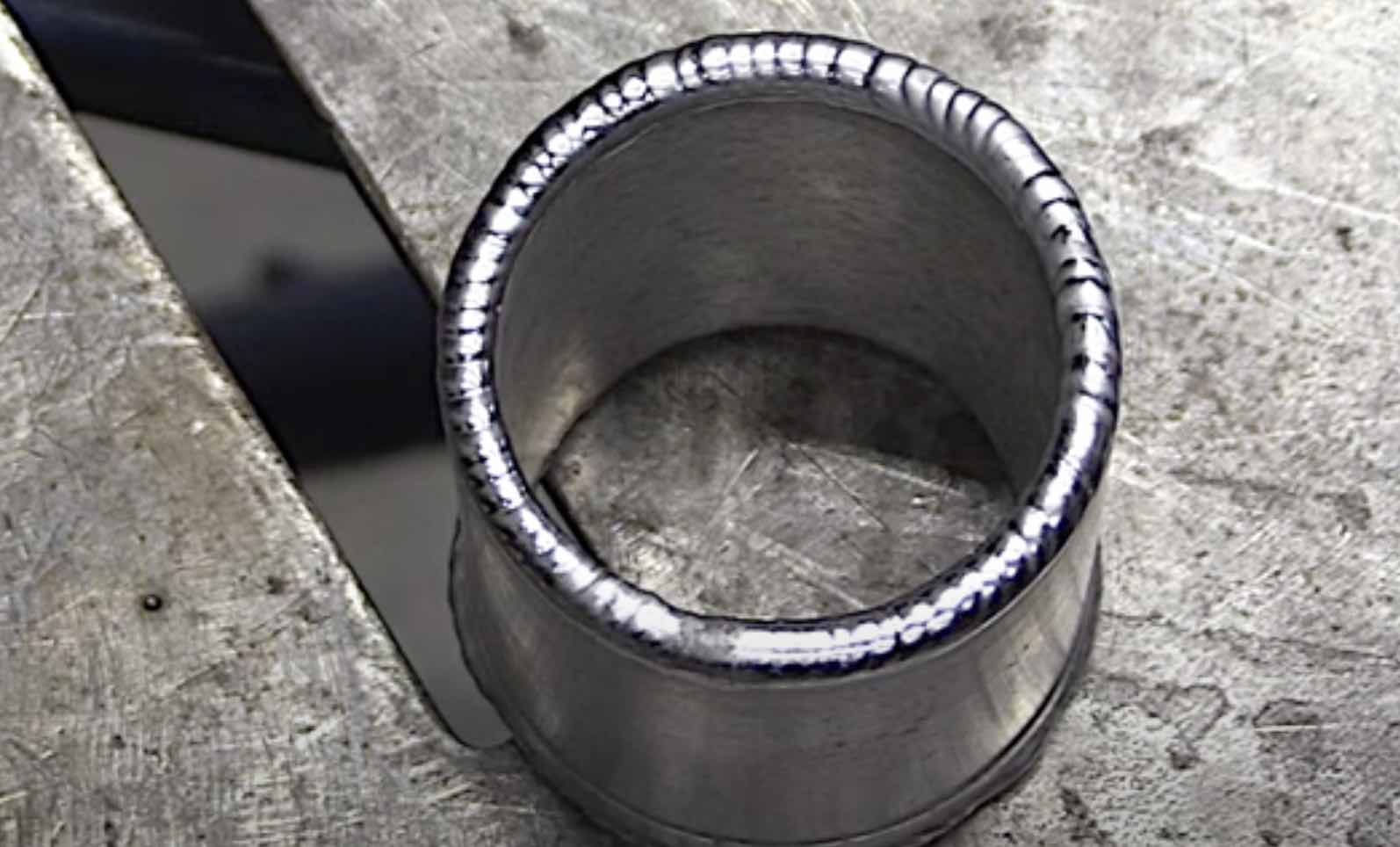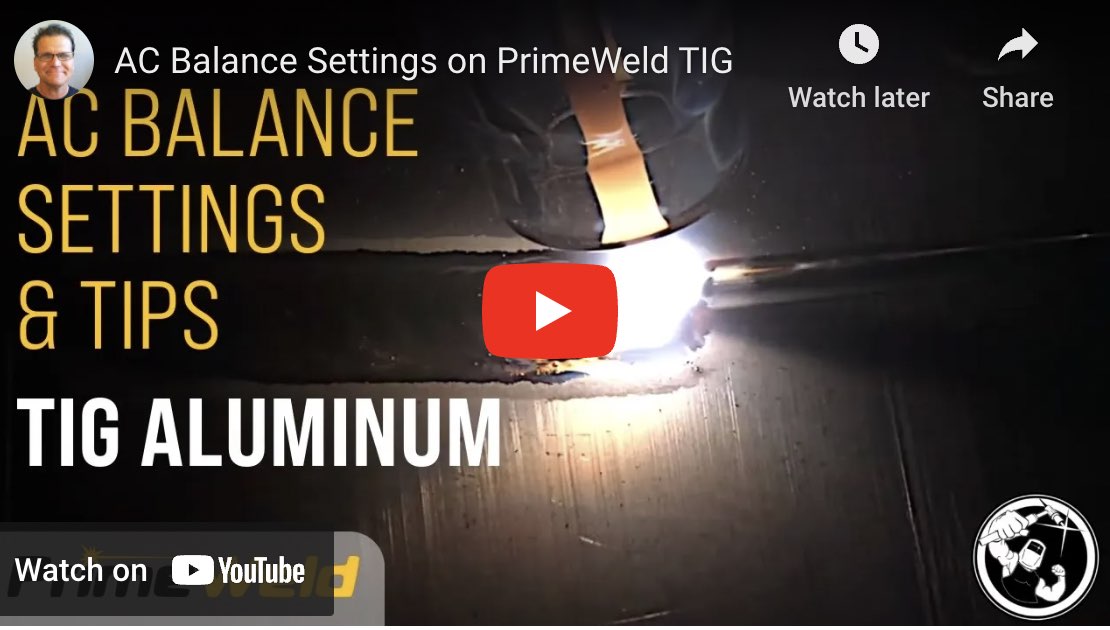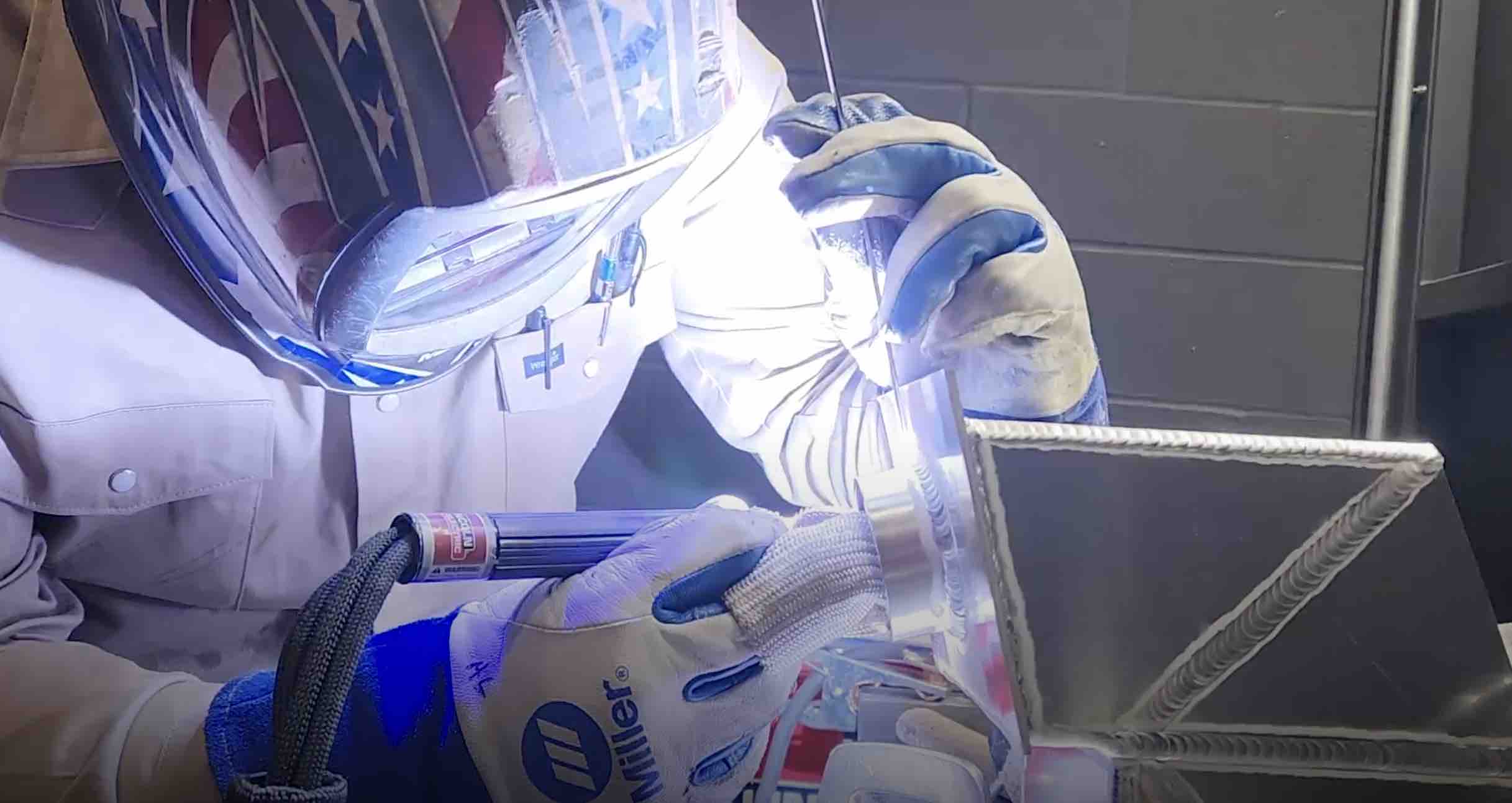Mastering AC Frequency: A Down and Dirty Guide for How to set AC Frequency
scroll down to watch videos
Watch the video below and you should have a very good understanding on how to set AC Frequency for best results

- HOME
- TIG WELDING ALUMINUM
- How to Tig Aluminum
- How to Set Ac Frequency
The primeweld TIG225 with Weldmonger/Furick TIG Kit Upgrade options for a savings
Add a Challenger kit, an Arsenal Kit, or TIG pro kit and still have a very affordable and capable tig welder
- HOME
- TIG WELDING ALUMINUM
- How to Tig Aluminum
- How to Set Ac Frequency
main tig welding aluminum page
There are 2 main settings on most newer tig welding inverters...
- AC Balance
- AC frequency
There are many more advanced settings on some TIG welders but these are the main 2.
This page is about how to set AC frequency for tig welding aluminum.
Lower AC frequency settings provide a wider bead with more heat input.
One example of where you need this is when you have a 200 or 225 amp machine and you are welding on a thick aluminum casting.
Higher AC frequency settings like 150hz and higher can provide a more focussed and pinpointed arc.

What is AC frequency?...and How to set AC frequency on a TIG welder
The AC frequency setting determines the number of times the current switches between the positive and negative cycle per second, measured in Hertz (Hz).
Modifying the AC frequency can have an impact on the weld bead width, arc stability, and heat control.
Here's how you can set the AC frequency for TIG welding aluminum:
- Know your TIG welding machine: Not all machines have an AC frequency setting option, but if your machine does, knowing what it does and how to set ac frequency will help you get the most out of your machine.
- Know your desired outcome: Consider the thickness of the aluminum and the desired welding outcome. AC frequency selection needed mostly depends on the specific application and some personal preference. (Lower frequencies are typically used for thicker materials, while higher frequencies are suitable for thinner materials and finer control.) Don't get hung up on just the right AC frequency setting because at the end of the day, the real difference is you the weldor.
- Start with a baseline frequency: If you're unsure about the appropriate frequency, a good starting point for TIG welding aluminum is often around 70-100 Hz. This range provides a balance between heat input and arc stability.
- Make adjustments: Based on the bead results, you may want to make fine-tuned adjustments to the AC frequency. Higher frequencies, such as 120 Hz and above, can result in a narrower bead with better arc control. Lower frequencies, like 60 Hz, create a wider bead and greater heat input. ( really high AC frequencies like above 250hz can be really annoying to listen to ...you might need ear plugs) but do have an application in pinpointing the arc while using a tapered tungsten.
- Test and evaluate: Perform test welds on scrap aluminum pieces with different AC frequencies. Observe the weld pool behavior, bead appearance, and overall weld quality. Pay attention to factors like arc stability, heat input, bead width, and penetration.
- Tune the settings: Depending on the test welds, adjust the AC frequency incrementally to achieve the desired results. Increase the frequency if you want a narrower bead or more precise control, or decrease it if you need wider penetration or heat input.
- Consider other factors: Keep in mind that AC balance control, another feature found on some TIG welding machines, allows you to adjust the time spent on each cycle (negative and positive) during the AC welding process. This control can also affect the weld characteristics, such as cleaning action and heat input. Experimenting with AC balance in conjunction with the frequency can help you really tune your welding settings.
Remember, these guidelines serve as a starting point, tig welding machines can vary. It heips to practice, experiment, and fine-tune your settings to achieve the best results for your specific welding requirements.
How to Set AC frequency for thinner metals and precision tig jobs
Here are three potential applications for using a 200 Hz AC frequency setting on a TIG welder:
- Thin Aluminum Welding: When working with thin sheet metal, a higher frequency setting can provide a more focussed arc, better control and stability during the welding process. The increased frequency helps to narrow the arc cone and focus the heat, enabling more precise welds.
- Precision Aluminum Welding: Certain applications, such as welding of intricate components or joints that require exceptional accuracy, can benefit from a higher frequency setting. The higher frequency allows for a more focussed arc cone. This is particularly useful for tasks like welding small parts or performing intricate welds in precision industries like aerospace.
- Aluminum Welding on or near an edge: TIG welding on an edge of aluminum can be challenging due to the way a tungsten tip can ball using lower frequency settings on an older transformer type tig welder. Using a higher frequency setting can aid in overcoming this difficulty. The increased frequency helps to stabilize the arc and provides better arc control, allowing for improved arc stability at lower amperage.
It's worth noting that the specific applications and advantages of using a 200 Hz or higher AC frequency setting on a TIG welder may vary depending on the materials being welded, and the skill and preference of the welder. It's always recommended to experiment to find the best settings for your particular welding tasks.
AC balance is another useful setting on newer tig welders
There is a separate page and video on AC balance settings right here.
But one thing you really need to know is which way your machine is set up.
Some AC balance dials are set up from 1-10 with 10 being more penetration.
But some are set up with 10 as maximum cleaning setting.
It might take some trial and error but whichever setting balls the tip of your tungsten the most is typically the setting with most cleaning action.
Always refer to your TIG welding machine's user manual and follow proper safety precautions while operating the equipment.















